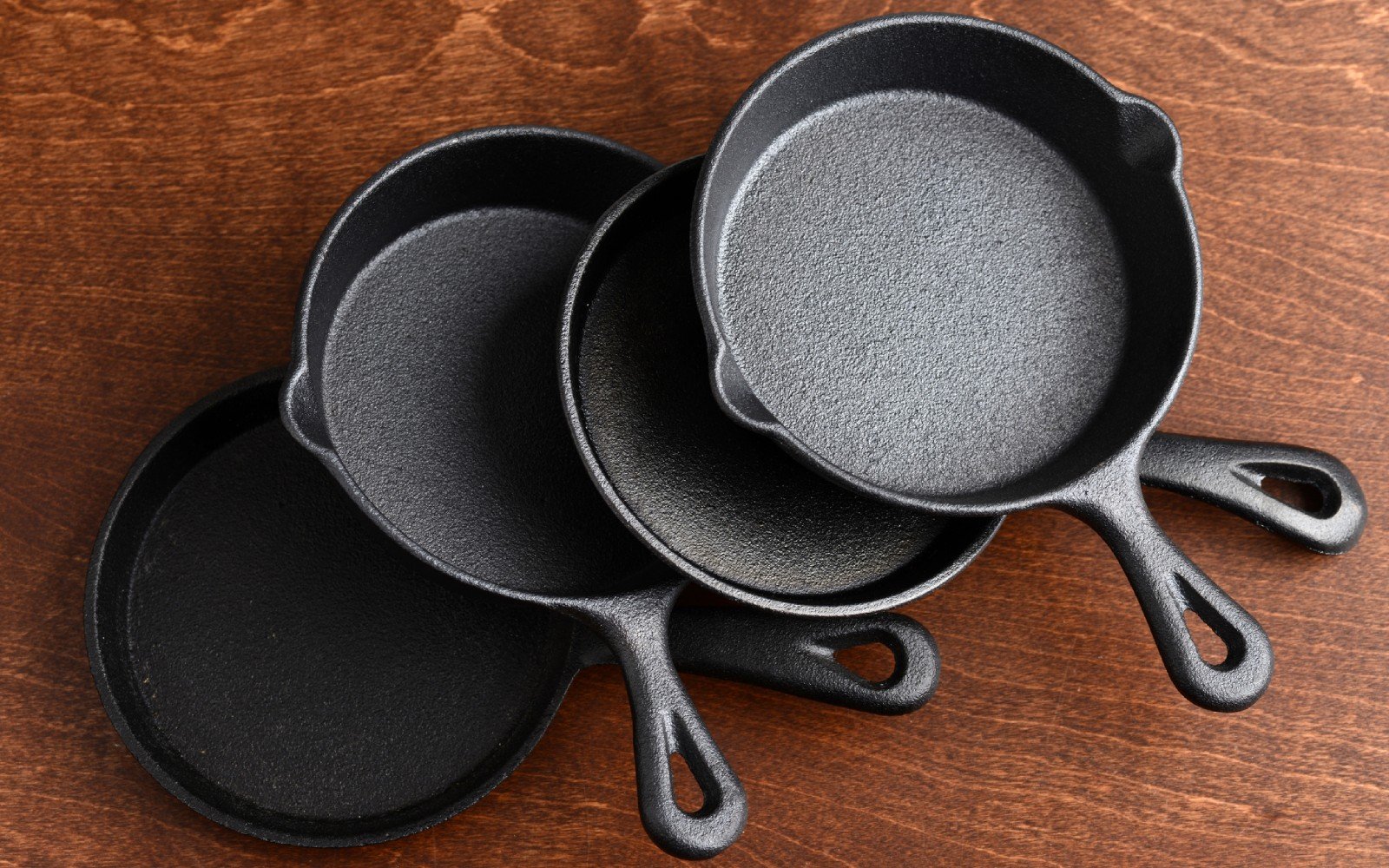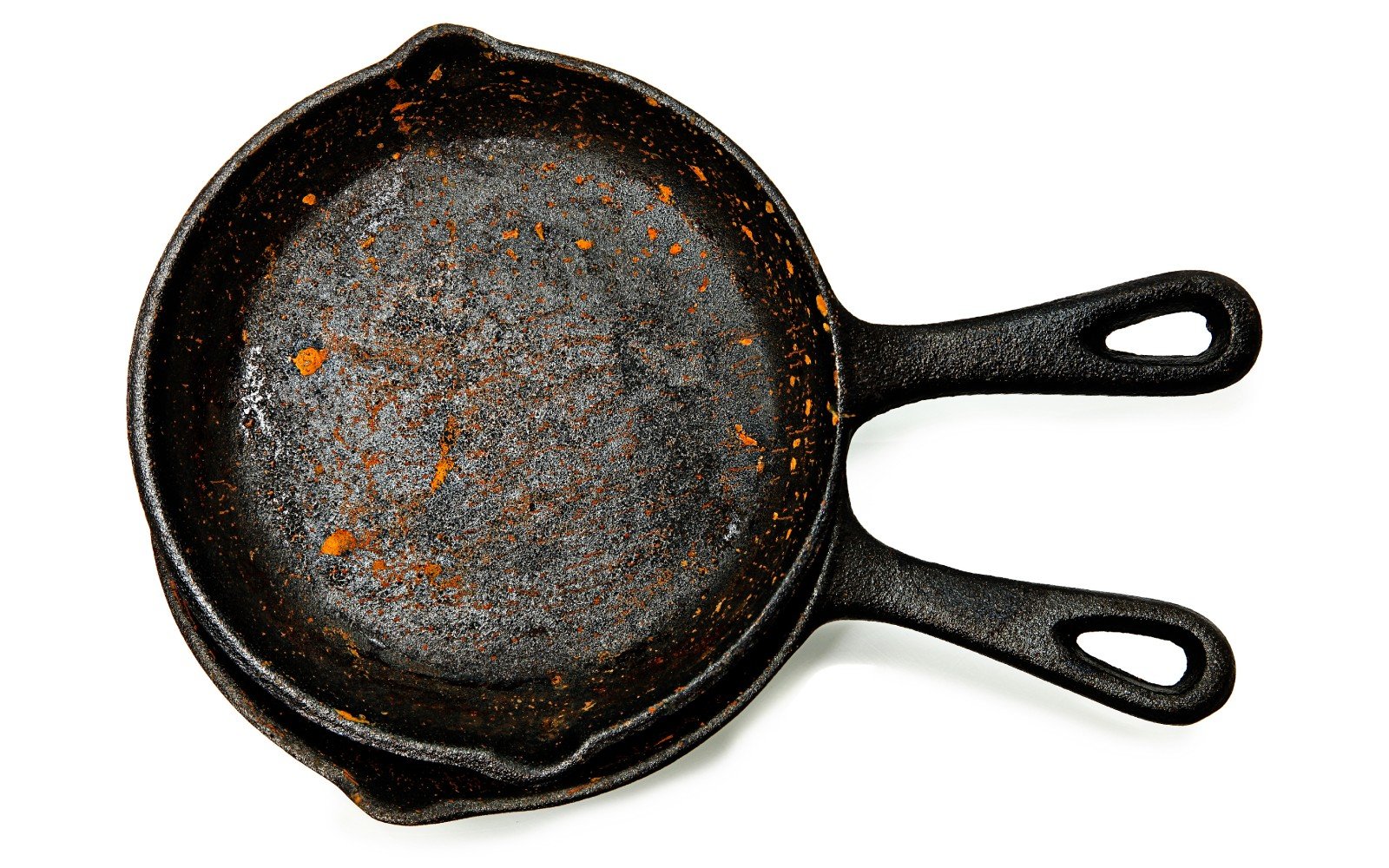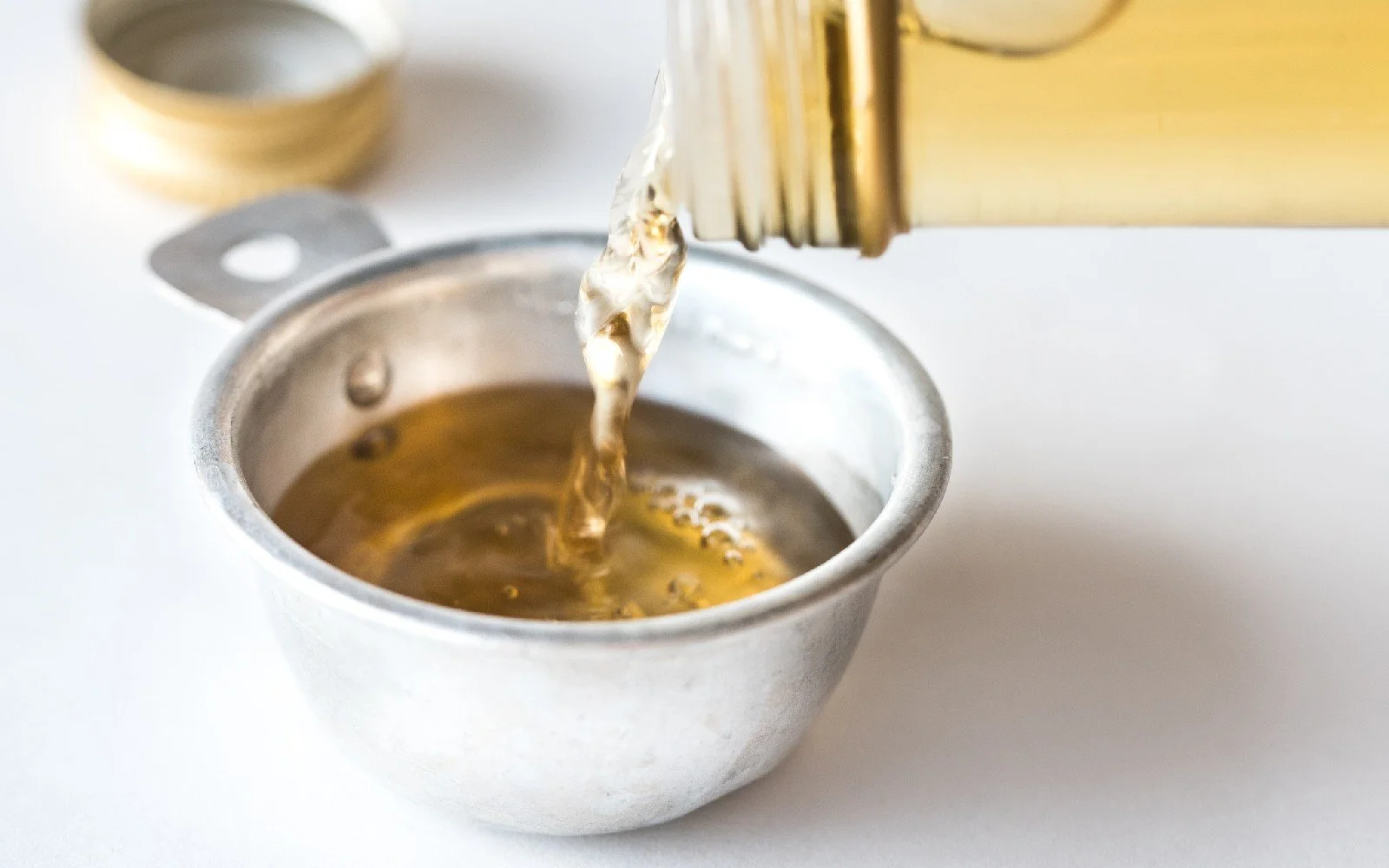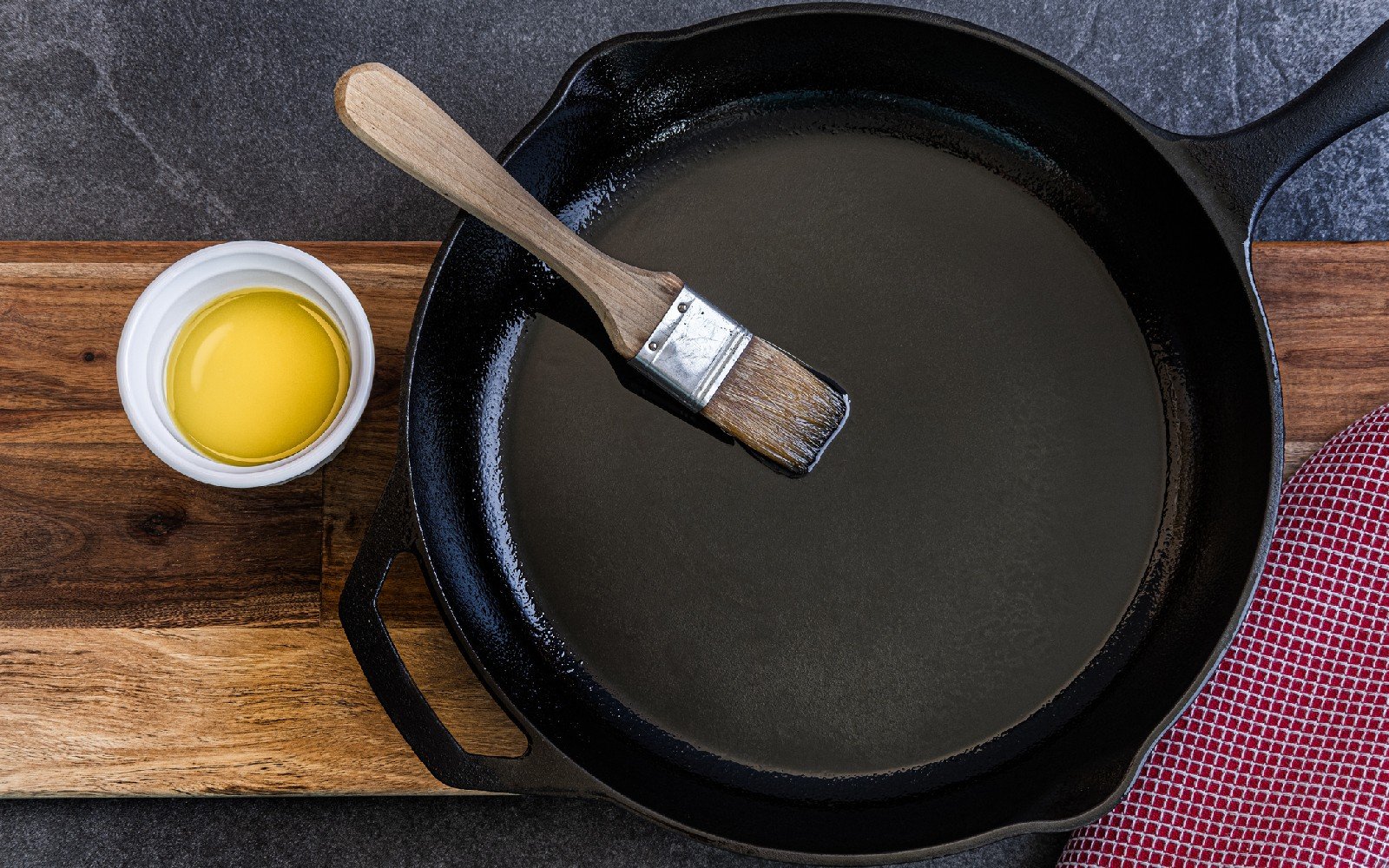How to Revive Cast Iron Cookware
Discover > Texas Home Cooking > How to Revive Cast Iron Cookware
Cast iron cookware set, used in chuckwagon cooking, has been a cooking mainstay throughout Texas history. In fact, in 2005, the 79th Texas Legislature session declared the cast-iron Dutch oven to be the official state cooking implement of Texas.
For most people, heirlooms come in the form of antiques or jewelry. In Texas, however, many homes have at least one treasured piece of cookware. Indeed, a cast iron pot is an indestructible piece of cooking equipment that can last many generations. And in the Lone Star State, cast iron pots and pans are often considered family treasures, safely tucked away in our kitchen cupboards or proudly hung on our walls.
Given their size, heft, and aversion to moisture, cast iron pots and skillets can be tricky to keep in their best state. Over the years, cast iron cookware can lose its finish – for example, when the burnt-on bits get out of control or if the pot or pan is simply not stored properly. The finish tends to corrode and can start to look like something one wouldn’t dare to cook food in…
The upkeep and maintenance that comes with owning cast-iron equipment may be intimidating and a little bit overwhelming. Unsurprisingly, this doesn’t scare away many Texan cooks and homemakers, with vintage cookware enthusiasts traveling to garage sales or flea markets in search of cast iron treasures.
Whether your piece is from a thrift shop, has been inherited, or has become a tad neglected, many cast iron owners find themselves wanting to restore this prized possession. In this post, you’ll learn the easiest ways on how to clean rusty cast iron cookware and how to care for it.
Terminology
The coating found on the surface of a piece of cast iron cookware is called seasoning. Seasoning forms when a thin layer of oil is heated in the presence of iron and oxygen. The oil breaks down into a plastic-like substance, which bonds to the surface of the metal, giving cast iron its nonstick properties.
The buildup of food particles that layer and burn on top of seasoning is called crud. These particles get darker with time, eventually leaving your pan covered with gunk that gets thicker and thicker the more you cook.
Without seasoning, cast iron is susceptible to rust. A little, or a lot of, rust on your cast iron cookware is no reason to panic. Even a well-seasoned pan can turn nasty when handled or stored improperly.
How to Clean Rusty Cast Iron Cookware
It takes a little bit of elbow grease, patience, and understanding to remove unwanted crud and rust. Here’s what you need to know about restoring your cast iron cookware set for use or display and bringing the beloved kitchen workhorse back to its A-game.
1.) Basic Rust Removal: Vinegar Bath
A simple solution of one part vinegar to ten parts water is good enough for removing minor rust. However, for heavier restoration jobs, a stronger solution of one part vinegar to one part water is the way to go.
Procedure: Submerge the entire pot/skillet in the vinegar solution for 30 minutes. Give it a good scrub using a steel scouring pad or some steel wool. Repeat as necessary but never leave the piece soaking for a longer period. The acidity from the vinegar can compromise and erode good iron if the piece is submerged for too long.
2.) Aerosol Oven Cleaner Spray
One of the most popular ways to strip off old seasoning from a cast iron pan is to coat it with an oven cleaner spray. These sprays are mostly lye-based.
Lye, the common name for the alkaline compound sodium hydroxide, is a chemical powerful enough to break down and dissolve hardened grease buildup on cast iron pots and pans.
Procedure: In a well-ventilated area or (even better) outdoors, coat your cast iron cookware with an oven cleaner spray. Allow the pan or skillet to soak up the chemicals by wrapping it in an airtight plastic bag. Place it in a warm spot, away from children and pets. This process can take several days – you’ll need to reapply the spray as necessary until all the crud has been softened into a brownish-black goo that can be rinsed off.
3.) Lye Bath
A lye bath is easier and more cost-effective compared to using an aerosol cleaner spray. This method effectively removes the crud from the cast iron without harming it, allowing you to leave the cookware in the bath for as long as necessary without worry.
Procedure: In a sturdy container, submerge your cookware in a solution of one pound of lye crystals per five gallons of water. Secure the lid and keep the container away from kids and pets. Depending on how thick the buildup is, it can take several days for the lye to soften and dissolve the crud. Remember to rinse your cast iron well before proceeding with the seasoning.
Since lye will not remove rust, the usual protocol for rust is to use lye first to de-crud the cast iron, and then finish with electrolysis to remove the rust and any remaining crud.
4.) Molasses Bath
A less hands-on, less intensive approach to rust removal is a molasses (how long does molasses last?) bath. This involves using liquid-form molasses, an animal feed supplement that can be purchased from local farm suppliers.
Procedure: Submerge the piece completely in a solution of one part molasses to nine parts water. Make sure to use a sturdy, crack-free container for soaking. Damage may occur should the solution leak out and allow the cookware to dry. Once complete, use a scrubber pad and hot water to remove the excess coating of molasses from your cookware.
5.) Electrolysis
The term electrolysis essentially means “to break down using electricity”. Cleaning by electrolysis is perhaps the most useful restoration method out there. An electrolysis tank uses an electric current to transfer the rust from the pan to a sacrificial piece of metal submerged in the water. A properly designed and implemented electrolysis tank comes with a bit more work and expense but removes both rust and thick crud very well.
Procedure: Making a DIY tank is much easier than it seems. The electrical current comes from a battery charger – the positive clamp is clamped onto the sacrificial piece of metal, and the negative clamp is clamped onto the piece of cast iron you’re trying to restore. The current flows through the water, pulling the rust particles from the negatively charged cast iron, which then stick on to the positively charged sacrificial metal.
Cleaning a regular-sized piece of cookware using electrolysis alone takes a couple of sessions, around eight hours each. Combining this method with a lye solution reduces the required cleaning time to one afternoon session of a few hours.
Post-Stripping Care
With the rust and crud completely removed, unseasoned cast iron pots and skillets should be dark gray with a matte finish.
Cast iron will start to rust almost immediately once it’s been stripped of rust and crud, leaving just a pure metal base layer. This means the seasoning needs to be applied immediately.
Seasoning procedure:
To start the process, a good scrubbing is in order.
Remember to properly dry your pot/skillet with a clean dish rag, or dry it completely on a stove/in a hot oven. Any lingering moisture will evaporate right off.
Apply a thin coat of any neutral oil to the entire pan. Coconut oil or vegetable oil (how long does vegetable oil last?) works well. Flaxseed oil makes for great-looking seasoning but tends to wear away easily. Rub the oil thoroughly, buffing it until the pan no longer looks even the slightest bit greasy. The smallest amount of excess oil may pool during seasoning, forming little hardened droplets that turn sticky if left untreated.
Bake your skillet upside down in the oven at 400°F for an hour. During this time, the oil will polymerize and form the first of several hard, plastic-like coatings, creating a naturally nonstick surface.
Repeat three to four times, reapplying and buffing the oil on the hot pan each time. And there you go, you should have a great layer of seasoning.
Over time, chemical reactions may cause rust to reappear. If this should occur, you may want to try a quick fix of mixing a tablespoon of oil with a teaspoon of salt. Scrub the affected area with a clean rag – the salt works as an abrasive while the oil recoats the area, preventing it from oxidizing.
How to Care for Cast Iron Cookware After Cooking?
You can clean your dirty cast iron pan with soap if it is dirty. There's a widespread belief that soap is not a good idea as it strips away the seasoning.
But the modern soaps of today are so gentle. The seasoning will only be stripped away if you scour it with steel wool or if you heat the pan at an extremely high temperature for an extended period without adding fat to it.
So, when you're finished cooking in your pan, clean it with warm soapy water and a non-scratch sponge. If there are burnt-on bits, use the synthetic scrubber on the back of kitchen sponges.
Make sure to dry the iron pan thoroughly. Because it is made of iron, you should not leave it dripping wet after washing.
Seasoning may prevent rust from forming. However, if you let the pan stand with water in it, the polymerized oil will not prevent oxidation between iron and water.
The bottom line is that the biggest enemy of cast iron cookware is improper care. However, this Southern kitchen staple can last many years if maintained properly.
Be sure to check out some of our recommendations for cast iron purchases.
Here’s a guide to cooking steakhouse quality steak.








